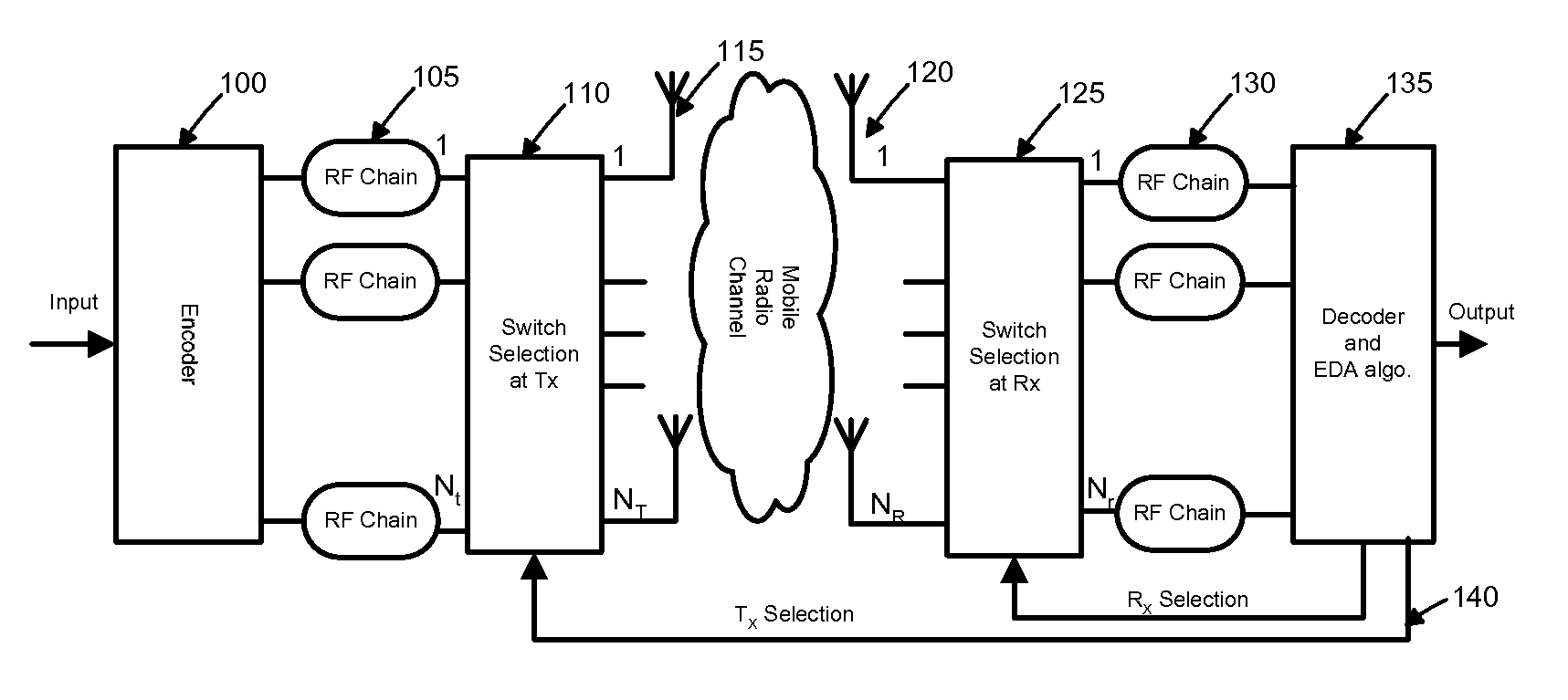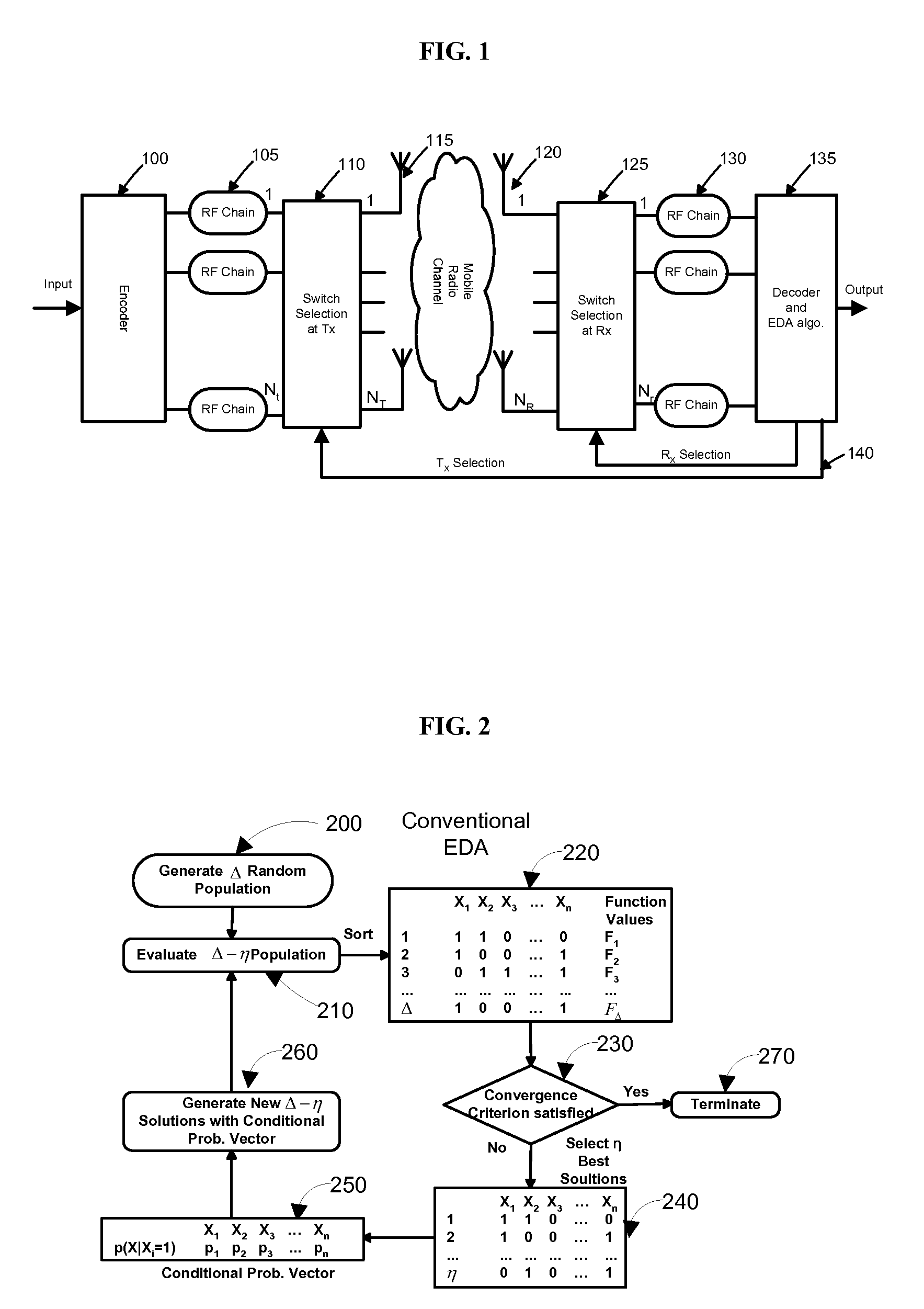Methods of Selecting Signal Transmitting, Receiving, and/or Sensing Devices with Probabilistic Evolutionary Algorithms in Information Conveyance Systems
a probabilistic evolutionary algorithm and information conveyance technology, applied in the field of data communication and signal processing, can solve the problems of increasing the number of rf chains, increasing the cost of the overall system, and no polynomial-time algorithm is known to select the antenna optimally, so as to prevent premature convergence
- Summary
- Abstract
- Description
- Claims
- Application Information
AI Technical Summary
Benefits of technology
Problems solved by technology
Method used
Image
Examples
Embodiment Construction
1. Model of a Communication System with Multiple Transmit Antennas and / or Multiple Receive Antennas
[0020]We consider an embodiment of a MIMO (Multiple-Input-Multiple-Output) system FIG. 1 with NT 115 transmit antennas and NR received antennas 120. There are Nr RF chains 130 at the receiver and Nt RF chains 105 at the transmitter. It is assumed that channel state information (CSI) is known at the receiver. This assumption is reasonable if training or pilot signals are sent to learn the channel, which is almost constant for some coherence time interval. On the basis of this known CSI, the receiver will select N, RF chains 130 from NR received antennas 120. The channel information is provided to the transmitter through a feedback channel 140. On the basis of this feedback information, the transmitter selects Nt RF chains 105 from NT transmit antennas 115. Source symbols are mapped into a modulation scheme such as M-PSK, M-FSK or M-QAM. Assuming that the mobile radio channel gain remain...
PUM
 Login to View More
Login to View More Abstract
Description
Claims
Application Information
 Login to View More
Login to View More - R&D
- Intellectual Property
- Life Sciences
- Materials
- Tech Scout
- Unparalleled Data Quality
- Higher Quality Content
- 60% Fewer Hallucinations
Browse by: Latest US Patents, China's latest patents, Technical Efficacy Thesaurus, Application Domain, Technology Topic, Popular Technical Reports.
© 2025 PatSnap. All rights reserved.Legal|Privacy policy|Modern Slavery Act Transparency Statement|Sitemap|About US| Contact US: help@patsnap.com



